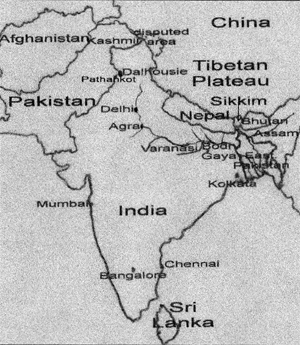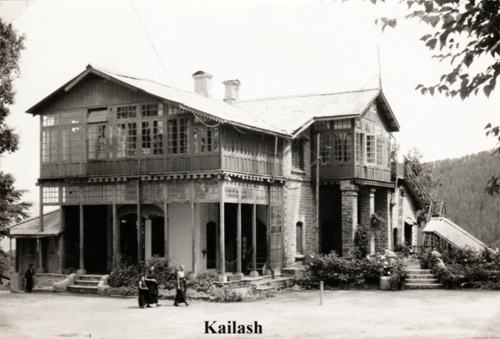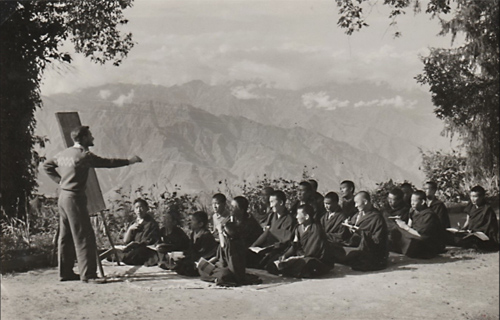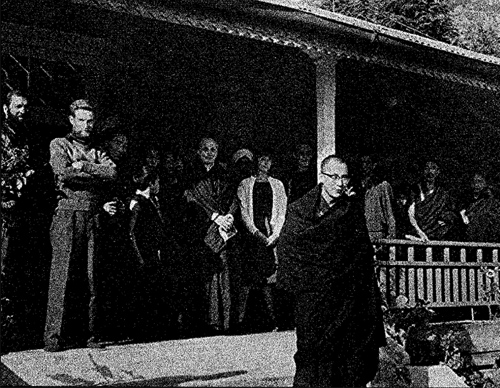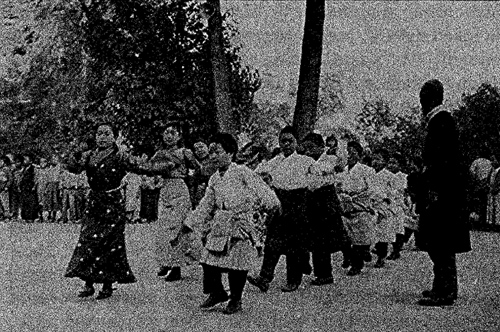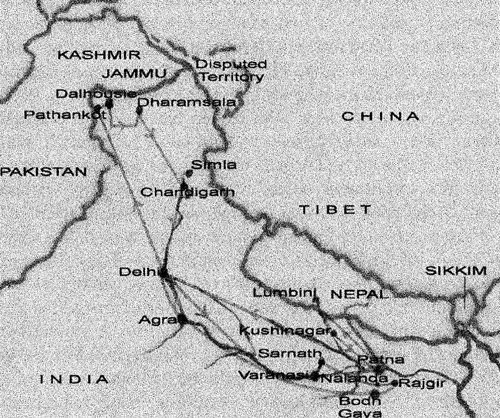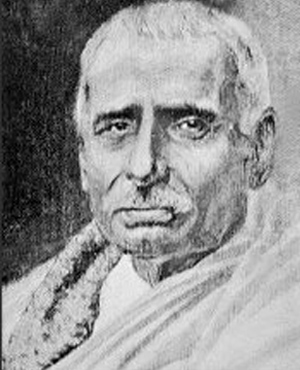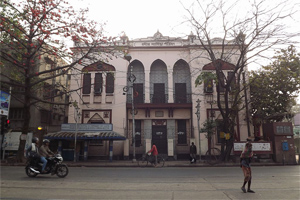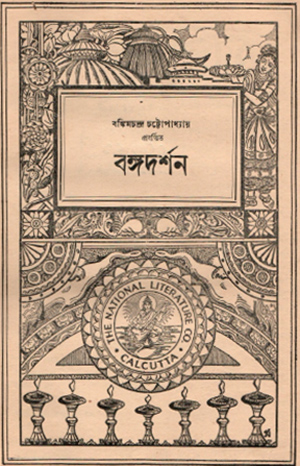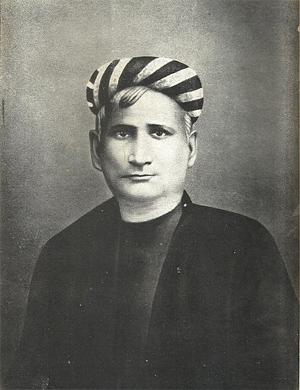by Henry Charles Lea
1878
If any One of the Partners by Affinity, at the Time of sharing and dividing their Property, concealed any Part of the Effects, and this Circumstance should afterwards appear, that Part shall then be divided equally among all not the other Partners, and the Man who concealed it. But if any One of the Partners still continues suspicious, he shall undergo the Purrikeh, that is Ordeal for him; whoever is not suspicious of him, he shall perform the Purrikeh....
If a Man brings a regular Suit against another, and that Person absolutely denies the Claim, in that Case, the Plaintiff shall be held to prove his Claim; if the Plaintiff has neither Writing nor Witnesses for his Proof, the Defendant shall perform the Purrikeh (that is) an Ordeal, to satisfy the other.
-- A Code of Gentoo Laws, Or, Ordinations of the Pundits, From a Persian Translation, Made From the Original, Written in the Shanscrit Language, by Nathaniel Brassey Halhed
THE OATH AND ITS ACCESSORIES...
So far, indeed, were the Barbarians from reposing implicit confidence in the integrity of their fellows that their earliest records show how fully they shared in the common desire of mankind to place the oath under the most efficient guarantees that ingenuity could devise. In its most simple form the oath is an invocation of some deity or supernatural power to grant or withhold his favor in accordance with the veracity of the swearer, but at all times men have sought to render this more impressive by interposing material objects dear to the individual, which were understood to be offered as pledges or victims for the divine wrath. Thus, among the Hindus, the ancient Manava Dharma Sastra prescribes the oath as satisfactory evidence in default of evidence, but requires it to be duly reinforced—
“In cases where there is no testimony, and the judge cannot decide upon which side lies the truth, he can determine it fully by administering the oath.
“Oaths were sworn by the seven Maharshis, and by the gods, to make doubtful things manifest, and even Vasishtha sware an oath before the king Sudama, son of Piyavana, when Viswamitra accused him of eating a hundred children.
“Let not the wise man take an oath in vain, even for things of little weight; for he who takes an oath in vain is lost in this world and the next.
“Let the judge swear the Brahman by his truth; the Kshatriya by his horses, his elephants, or his arms; the Vaisya by his cows, his corn, and his gold; the Sudra by all crimes.”
And in the more detailed code of Vishnu there is an exceedingly complicated system of objects to be sworn upon, varying with the amount at stake and the caste of the swearer...
The black Australioid Khonds ... Not only do they constantly employ the ordeals of boiling water and oil and red-hot iron, which they may have borrowed from their Hindu neighbors, but they administer judicial oaths with imprecations that are decidedly of the character of ordeals. Thus an oath is taken on a tiger’s skin with an invocation of destruction from that animal upon the perjured; or upon a lizard’s skin whose scaliness is invited upon him who may forswear himself; or over an ant-hill with an imprecation that he who swears falsely may be reduced to powder....
The hill-tribes of Rajmahal, who represent another of the pre-Aryan Indian races, furnish us with further developments of the same principle, in details bearing a marked analogy to those practised by the most diverse families of mankind. Thus the process by which the guilt of Achan was discovered (Joshua vii. 16-18), and that by which, as we shall see hereafter, Master Anselm proposed to identify the thief of the sacred vessels of Laon, are not unlike the ceremony used when a district is ravaged by tigers or by pestilence, which is regarded as a retribution for sin committed by some inhabitant, whose identification thus becomes all-important for the salvation of the rest. In the process known as Satane a person sits on the ground with a branch of the bale tree planted opposite to him; rice is handed to him to eat in the name of each village of the district, and when the one is named in which the culprit lives, he is expected to throw up the rice. Having thus determined the village, the same plan is adopted with respect to each family in it, and when the family is identified, the individual is discovered in the same manner. Another form, named Cherreen, is not unlike the ordeal of the Bible and key, not as yet obsolete among Christians. A stone is suspended by a string, and the names of the villages, families, and individuals are repeated, when it indicates the guilty by its vibrations. Thieves are also discovered and convicted by these processes, and by another mode known as Gobereen, which is a modification of the hot-water ordeal. A mixture of cow-dung, oil, and water is made to boil briskly in a pot. A ring is thrown in, and each suspected person, after invoking the Supreme Deity, is required to find and bring out the ring with his hand—the belief being that the innocent will not be burned, while the guilty will not be able to put his hand into the pot, as the mixture will rise up to meet it....
It is among the Aryan races that we are to look for the fullest and most enduring evidences of the beliefs which developed into the ordeal, and gave it currency from the rudest stages of nomadic existence to periods of polished and enlightened civilization. In the perfect dualism of Mazdeism, the Yazatas, or angels of the good creation, were always prompt to help the pure and innocent against the machinations of Ahriman and his Daevas, their power to do so depending only upon the righteousness of him who needed assistance. The man unjustly accused, or seeking to obtain or defend his right, could therefore safely trust that any trial to which he might be subjected would be harmless, however much the ordinary course of nature would have to be turned aside in order to save him. Thus Zoroaster could readily explain and maintain the ancestral practices, the common use of which by both the Zend and the Hindu branches of the Aryan family points to their origin at a period anterior to the separation between the kindred tribes. In the fragments of the Avesta, which embody what remains to us of the prehistoric law of the ancient Persians, we find a reference to the ordeal of boiling water, showing it to be an accepted legal process, with a definite penalty affixed for him who failed to exculpate himself in it:—
“Creator! he who knowingly approaches the hot, golden, boiling water, as if speaking truth, but lying to Mithra;
“What is the punishment for it?
“Then answered Ahura-Mazda: Let them strike seven hundred blows with the horse-goad, seven hundred with the craosho-charana!"
The fire ordeal is also seen in the legend which relates how Sudabeh, the favorite wife of Kai Kaoos, became enamored of his son Siawush, and on his rejecting her advances accused him to his father of endeavoring to seduce her. Kai Kaoos sent out a hundred caravans of dromedaries to gather wood, of which two immense piles were built separated by a passage barely admitting a horseman. These were soaked with naphtha and fired in a hundred places, when Siawush mounted on a charger, after an invocation to God, rode through the flames and emerged without even a discoloration of his garments. Sudabeh was sentenced to death, but pardoned on the intercession of Siawush. Another reminiscence of the same ordeal may be traced among the crowd of fantastic legends with which the career of Zoroaster is embroidered. It is related that when an infant he was seized by the magicians, who foresaw their future destruction at his hands, and was thrown upon a huge pile composed of wood, naphtha, and sulphur, which was forthwith kindled; but, through the interposition of Hormazd, “the devouring flame became as water, in the midst of which slumbered the pearl of Zardusht.”
In Pehlvi the judicial ordeal was known as var nirang, and thirty-three doubtful conjunctures are enumerated as requiring its employment. The ordinary form was the pouring of molten metal on the body of the patient, though sometimes the heated substance was applied to the tongue or the feet. Of the former, a celebrated instance, curiously anticipating the story told, as we shall see hereafter, of Bishop Poppo when he converted the Danes, is related as a leading incident in the reformation of the Mazdiasni religion when the Persian monarchy was reconstructed by the Sassanids. Eighty thousand heretics remained obstinate until Sapor I. was so urgent with his Magi to procure their conversion that the Dustoor Adurabad offered to prove the truth of orthodoxy by suffering eighteen pounds of melted copper to be poured over his naked shoulders if the dissenters would agree to yield their convictions in case he escaped unhurt. The bargain was agreed to, and carried out with the happiest results. Not a hair of the Dustoor’s body was singed by the rivulets of fiery metal, and the recusants were gathered into the fold.
Among the Hindu Aryans so thoroughly was the divine interposition expected in the affairs of daily life that, according to the Manava Dharma Sastra, if a witness, within a week after giving testimony, should suffer from sickness, or undergo loss by fire, or the death of a relation, it was held to be a manifestation of the divine wrath, drawn down upon him in punishment for perjured testimony. There was, therefore, no inducement to abandon the resource of the ordeal, of which traces may be found as far back as the Vedic period, in the forms both of fire and red-hot iron. In the Ramayana, when Rama, the incarnate Vishnu, distrusts the purity of his beloved Sita, whom he has rescued from the Rakshasha Ravana, she vindicates herself by mounting a blazing pyre, from which she is rescued unhurt by the fire-god, Agni, himself. Manu declares, in the most absolute fashion—
“Let the judge cause him who is under trial to take fire in his hand, or to plunge in water, or to touch separately the heads of his children and of his wife.
“Whom the flame burneth not, whom the water rejects not from its depths, whom misfortune overtakes not speedily, his oath shall be received as undoubted.
“When the Rishi Vatsa was accused by his young half-brother, who stigmatized him as the son of a Sudra, he swore that it was false, and, passing through fire, proved the truth of his oath; the fire, which attests the guilt and the innocence of all men, harmed not a hair of his head, for he spake the truth.”
And the practical application of the rule is seen in the injunction on both plaintiff and defendant to undergo the ordeal, even in certain civil cases.
In the more developed code of Vishnu we find the ordeal system exceedingly complicated, pervading every branch of jurisprudence and only limited by the amount at stake or the character or caste of the defendant. Yet Hindu antiquity is so remote and there have been so many schools of teachers that the custom apparently did not prevail in all times and places. One of the most ancient books of law is the Dharmasastra of Gautama, who says nothing of ordeals and relies for proof wholly on the evidence of witnesses, adding the very relaxed rule that “No guilt is incurred in giving false evidence in case the life of a man depends thereon.”
This, however, is exceptional, and the ordeal maintained its existence from the most ancient periods to modern times. Under the name of purrikeh, or parikyah, it is prescribed in the native Hindu law in all cases, civil and criminal, which cannot be determined by written or oral evidence, or by oath, and is sometimes incumbent upon the plaintiff and sometimes upon the defendant. In its various forms it bears so marked a resemblance to the judgments of God current in mediæval Europe that the further consideration of its use in India may be more conveniently deferred till we come to discuss its varieties in detail, except to add that in Hindu, as in Christian courts, it has always been a religious as well as a judicial ceremony, conducted in the presence of Brahmans, and with the use of invocations to the higher powers....
THE ORDEAL OF BOILING WATER.
The ordeal of boiling water (æneum, judicium aquæ ferventis, cacabus, caldaria) is the one usually referred to in the most ancient texts of laws. It was a favorite both with the secular and ecclesiastical authorities, and the manner in which the pagan usages of the ancient Aryans were adopted and rendered orthodox by the Church is well illustrated by the commendation bestowed on it by Hincmar, Archbishop of Reims, in the ninth century. It combines, he says, the elements of water and of fire; the one representing the deluge—the judgment inflicted on the wicked of old; the other authorized by the fiery doom of the future—the day of judgment, in both of which we see the righteous escape and the wicked suffer. There were several minor variations in its administration, but none of them departed to any notable extent from the original form as invented in the East. A caldron of water was brought to the boiling-point, and the accused was obliged with his naked hand to find a small stone or ring thrown into it; sometimes the latter portion was omitted, and the hand was simply inserted, in trivial cases to the wrist, in crimes of magnitude to the elbow; the former being termed the single, the latter the triple ordeal; or, again, the stone was employed, suspended by a string, and the severity of the trial was regulated by the length of the line, a palm’s breadth being counted as single, and the distance to the elbow as triple...
As a means of judicial investigation, the Church, in adopting it with the other ordeals, followed the policy of surrounding it with all the solemnity which her most venerated rites could impart, thus imitating, no doubt unconsciously, the customs of the Hindus, who, from the earliest times, have made the ordeal a religious ceremony, to be conducted by Brahmans, with invocations to the divine powers, and to be performed by the patient at sunrise, immediately after the prescribed ablutions, and while yet fasting....
The modern Hindoo variety of this ordeal consists in casting a piece of gold or a metal ring into a vessel of boiling ghee, or sesame oil, of a specified size and depth. Sacrifices are offered to the gods, a mantra, or Vedic prayer, is uttered over the oil, which is heated until it burns a fresh peepul leaf, and if the person on trial can extract the ring between his finger and thumb, without scalding himself, he is pronounced victorious. In 1783 a case is recorded as occurring at Benares, in which a Brahman accused a linen-painter of theft, and as there was no other way of settling the dispute, both parties agreed to abide by the result of the ordeal... So lately as 1867 the Bombay Gazette records a case occurring at Jamnuggur, when a camel-driver named Chakee Soomar, under whose charge a considerable sum of money was lost, was exposed by a local official to the ordeal of boiling oil... it was performed by placing a small silver ball in a brazen vessel eight inches deep, filled with boiling ghee. After various religious ceremonies, the accused plunged in his hand, and sometimes was obliged to repeat the attempt several times before he could bring out the ball. The hand was then wrapped up in tender palm leaves and examined after an interval of three days...
In almost all ages there has existed the belief that under the divine influence the human frame was able to resist the action of fire. Even the sceptic Pliny seems to share the superstition as to the families of the Hirpi, who at the annual sacrifice made to Apollo, on Mount Soracte, walked without injury over piles of burning coals, in recognition of which, by a perpetual senatus consultum, they were relieved from all public burdens. That fire applied either directly or indirectly should be used in the appeal to God was therefore natural, and the convenience with which it could be employed by means of iron rendered that the most usual form of the ordeal. As employed in Europe, under the name of judicium ferri or juise it was administered in two essentially different forms. The one (vomeres igniti, examen pedale) consisted in laying on the ground at certain distances six, nine, or in some cases twelve, red-hot ploughshares, among which the accused walked barefooted, sometimes blindfolded, when it became an ordeal of pure chance, and sometimes compelled to press each iron with his naked feet. The other and more usual form obliged the patient to carry in his hand for a certain distance, usually nine feet, a piece of red-hot iron, the weight of which was determined by law and varied with the importance of the question at issue or the magnitude of the alleged crime. Thus, among the Anglo-Saxons, in the “simple ordeal” the iron weighed one pound, in the “triple ordeal” three pounds. The latter is prescribed for incendiaries and “morth-slayers” (secret murderers), for false coining, and for plotting against the king’s life; while at a later period, in the collection known as the Laws of Henry I., we find it extended to cases of theft, robbery, arson, and felonies in general. In Sweden, for theft, the form known as trux iarn was employed, in which the accused had to carry the red-hot iron and deposit it in a hole twelve paces from the starting-point; in other cases the ordeal was called scuz iarn, when he carried it nine paces and then cast it from him. These ordeals were held on Wednesday, after fasting on bread and water on Monday and Tuesday; the hand or foot was washed, after which it was allowed to touch nothing till it came in contact with the iron; it was then wrapped up and sealed until Saturday, when it was opened in presence of the accuser and the judges. In Spain, the iron had no definite weight, but was a palm and two fingers in length, with four feet, high enough to enable the criminal to lift it conveniently. The episcopal benediction was necessary to consecrate the iron to its judicial use. A charter of 1082 shows that the Abbey of Fontanelle in Normandy had one of approved sanctity, which, through the ignorance of a monk, was applied to other purposes. The Abbot thereupon asked the Archbishop of Rouen to consecrate another, and before the latter would consent the institution had to prove its right to administer the ordeal. The wrapping up and sealing of the hand was a general custom, derived from the East, and usually after three days it was uncovered and the decision was rendered in accordance with its condition. These proceedings were accompanied by the same solemn observances which have been already described, the iron itself was duly exorcised, and the intervention of God was invoked in the name of all the manifestations of Divine clemency or wrath by the agency of fire—Shadrach, Meshach, and Abednego, the burning bush of Horeb, the destruction of Sodom, and the day of judgment. Occasionally, when several criminals were examined together, the same piece of heated iron was borne by them successively, giving a manifest advantage to the last one, who had to endure a temperature considerably less than his companions.
In India this was one of the earliest forms of the ordeal, in use even in the Vedic period, as it is referred to in the Khandogya Upanishad of the Sama Veda, where the head of a hatchet is alluded to as the implement employed for the trial—subsequently replaced by a ploughshare. In the seventh century, A. D., Hiouen Thsang reports that the red-hot iron was applied to the tongue of the accused as well as to the palms of his hands and the soles of his feet, his innocence being designated by the amount of resultant injury. This may have been a local custom, for, according to Institutes of Vishnu, closely followed by Yajnavalkya, the patient bathes and performs certain religious ceremonies; then after rubbing his hands with rice bran, seven green asvattha leaves are placed on the extended palms and bound with a thread. A red-hot iron ball or spear-head, weighing about two pounds and three-quarters, is then brought, and the judge adjures it—
“Thou, O fire, dwellest in the interior of all things like a witness. O fire, thou knowest what mortals do not comprehend.
“This man being arraigned in a cause desires to be cleared from guilt. Therefore mayest thou deliver him lawfully from this perplexity.”
The glowing ball is then placed on the hands of the accused, and with it he has to walk across seven concentric circles of cow-dung, each with a radius sixteen fingers’ breadth larger than the preceding, and throw the ball into a ninth circle, where it must burn some grass placed there for the purpose. If this be accomplished without burning the hands, he gains his cause, but the slightest injury convicts him. A minimum limit of a thousand pieces of silver was established at an early period as requisite to justify the administration of this form of ordeal in a suit. But the robust faith in the power of innocence characteristic of the earlier Hindus seems to have diminished, for subsequent recensions of the code and later lawgivers increase the protection afforded to the hand by adding to the asvattha leaves additional strata of dharba grass and barley moistened with curds, the whole bound around with seven turns of raw silk. Ali Ibrahim Khan relates a case which he witnessed at Benares in 1783 in which a man named Sancar, accused of larceny, offered to be tried in this manner.... The ordeal took place in presence of a large assemblage, when, to the surprise of every one, Sancar carried the red-hot ball through the seven circles, threw it duly into the ninth where it burnt the grass, and exhibited his hands uninjured.... Even in 1873, the Bombay Gazette states that this ordeal is still practised in Oodeypur, where a case had shortly before occurred wherein a husbandman had been obliged to prove his innocence by holding a red-hot ploughshare in his hands, duly guarded with peepul leaves, turning his face towards the sun and invoking it: “Thou Sun-God, if I am actually guilty of the crime, punish me; if not, let me escape unscathed from the ordeal!”—and in this instance, also, the accused was uninjured.
A peculiar modification of the hot-iron ordeal is employed by the aboriginal hill-tribes of Rajmahal, in the north of Bengal, when a person believes himself to be suffering from witchcraft. The Satane and the Cherreen are used to find out the witch, and then the decision is confirmed by a person representing the sufferer, who, with certain religious ceremonies, applies his tongue to a red-hot iron nine times, unless sooner burnt. A burn is considered to render the guilt of the accused indubitable, and his only appeal is to have the trial repeated in public, when, if the same result follows, he is bound either to cure the bewitched person or to suffer death if the latter dies....
THE ORDEAL OF FIRE.
The ordeal of fire, administered directly, without the intervention either of water or of iron, is one of the most ancient forms, as is shown by the allusions to it in both the Hindu Vedic writings, the adventure of Siawush, and the passage in the Antigone of Sophocles (pp. 266, 267, 270). In this, its simplest form, it may be considered the origin of the proverbial expression, “J’en mettrois la main au feu,” [Google translate: I put my hand in the fire] as an affirmation of positive belief, showing how thoroughly the whole system engrained itself in the popular mind. In India, as practised in modern times, its form approaches somewhat the ordeal of the burning ploughshares. A trench is dug nine hands in length, two spans in breadth, and one span in depth. This is filled with peepul wood, which is then set on fire, and the accused walks into it with bare feet. A more humane modification is described in the seventh century by Hiouen-Thsang as in use when the accused was too tender to undergo the trial by red-hot iron. He simply cast into the flames certain flower-buds, when, if they opened their leaves, he was acquitted; if they were burnt up, he was condemned....
THE ORDEAL OF COLD WATER...
In India the ordeal of cold water became simply one of endurance. The stream or pond was exorcised with the customary Mantras:—
“Thou O water dwellest in the interior of all things like a witness. O water thou knowest what mortals do not comprehend.
“This man being arraigned in a cause desires to be cleared from guilt. Therefore mayest thou deliver him lawfully from this perplexity.”
The patient stood in water up to his middle, facing the East, caught hold of the thighs of a man “free from friendship or hatred” and dived under, while simultaneously an arrow of reed without a head was shot from a bow, 106 fingers’ breadth in length, and if he could remain under water until the arrow was picked up and brought back, he gained his cause, but if any portion of him could be seen above the surface he was condemned. Yajnavalkya says this form of ordeal was only used on the Sudras, or lowest caste, while the Ayeen Akbery speaks of it as confined to the Vaisyas, or caste of husbandmen and merchants. According to the Institutes of Vishnu, it was not to be administered to the timid or those affected with lung diseases, nor to those who gained their living by the water, such as fishermen or boatmen, nor was it allowed during the winter.
Although, as we have seen, the original cold-water ordeal in India, as described by Manu, was precisely similar to the European form, inasmuch as the guilty were expected to float and the innocent to sink, and although in this shape it prevailed everywhere throughout Europe, and its tenacity of existence rendered it the last to disappear in the progress of civilization, yet it does not make its appearance in any of the earlier codes of the Barbarians. The first allusions to it occur in the ninth century, and it was then so generally regarded as a novelty that documents almost contemporaneous ascribe its invention to the popes of that period...
THE ORDEAL OF THE BALANCE.
We have seen above that a belief existed that persons guilty of sorcery lost their specific gravity, and this superstition naturally led to the use of the balance in the effort to discover and punish the crime of witchcraft, which all experts assure us was the most difficult of all offences on which to obtain evidence. The trial by balance, however, was not a European invention. Like nearly all the other ordeals, it can be traced back to India, where, at least as early as the time of the Institutes of Vishnu, it was in common use. It is described there as reserved for women, children, old men, invalids, the blind, the lame, and the privileged Brahman caste, and not to be undertaken when a wind was blowing. After proper ceremonies the patient was placed in one scale, with an equivalent weight to counterbalance him in the other, and the nicety of the operation is shown by the prescription that the beam must have a groove with water in it, evidently for the purpose of detecting the slightest deflection either way. The accused then descended and the judge addressed the customary adjuration to the balance:—
“Thou, O balance, art called by the same name as holy law (dharma); thou, O balance, knowest what mortals do not comprehend.
“This man, arraigned in a cause, is weighed upon thee. Therefore mayest thou deliver him lawfully from this perplexity.”
Then the accused was replaced in the scale, and if he were found to be lighter than before he was acquitted. If the scale broke, the trial was to be repeated...
THE ORDEAL OF THE CROSS.
The ordeal of the cross (judicium crucis, stare ad crucem) was one of simple endurance and differed from all its congeners, except the duel, in being bilateral. The plaintiff and defendant, after appropriate religious ceremonies and preparation, stood with uplifted arms before a cross, while divine service was performed, victory being adjudged to the one who was able longest to maintain his position. An ancient formula for judgments obtained in this manner in cases of disputed titles to land prescribes the term of forty-two nights for the trial. It doubtless originated in the use of this exercise by the Church both as a punishment and as a penance...
In India a cognate mode is adopted by the people of Ramgur to settle questions of disputed boundaries between villages. When agreement by argument or referees is found impossible, each community chooses a champion, and the two stand with one leg buried in the earth until weariness or the bites of insects cause one of them to yield, when the territory in litigation is adjudged to the village of the victor...
THE CORSNÆD.
The ordeal of consecrated bread or cheese (judicium offæ, panis conjuratio, pabulum probationis, the corsnæd of the Anglo-Saxons) was administered by presenting to the accused a piece of bread (generally of barley) or of cheese, about an ounce in weight,1079 over which prayers and adjurations had been pronounced. After appropriate religious ceremonies, including the communion, the morsel was eaten, the event being determined by the ability of the accused to swallow it...
In India, this ordeal is performed with a kind of rice called sathee, prepared with various incantations. The person on trial eats it, with his face to the East, and then spits upon a peepul leaf. “If the saliva is mixed with blood, or the corners of his mouth swell, or he trembles, he is declared to be a liar.” A slightly different form is described for cases in which several persons are suspected of theft. The consecrated rice is administered to them all, is chewed lightly, and then spit out upon a peepul leaf. If any one ejects it either dry or tinged with blood, he is adjudged guilty.
Based on the same theory is a ceremony performed by the pre-Aryan hill-tribes of Rajmahal, when swearing judges into office preparatory to the trial of a case. In this a pinch of salt is placed upon a tulwar or scimitar, and held over the mouth of the judge, to whom is addressed the adjuration, “If thou decidest contrary to thy judgment and falsely, may this salt be thy death!” The judge repeats the formula, and the salt is washed with water into his mouth...
THE EUCHARIST AS AN ORDEAL.
From ancient times in India there has been in common use an ordeal known as cosha, consisting of water in which an idol has been washed. The priest celebrates solemn rites “to some tremendous deity,” such as Durga or the Adityas, whose image is then bathed in water. Three handfuls of this water are then drunk by the accused, and if within fourteen days he is not visited with some dreadful calamity from the act of the deity or of the king, “he must indubitably be acquitted.”...
THE ORDEAL OF THE LOT.
The appeal to chance, as practised in India, bears several forms, substantially identical in principle. One mode consists in writing the words dherem (consciousness of innocence) and adherem (its opposite) on plates of silver and lead respectively, or on pieces of white and black linen, which are placed in a vessel that has never held water. The person whose cause is at stake inserts his hand and draws forth one of the pieces, when if it happens to be dherem it proves his truth. Another method is to place in a vessel a silver image of Dharma, the genius of justice, and one in iron or clay of Adharma; or else a figure of Dharma is painted on white cloth and another on black cloth, and the two are rolled together in cow-dung and thrown into a jar, when the accused is acquitted or convicted according to his fortune in drawing Dharma....
CONDITIONS OF THE ORDEAL....
In India, the accused was required to undergo the risk of a fine if he desired to force his adversary to the ordeal; but either party could voluntarily undertake it, in which case the other was subject to a mulct if defeated.1214 The character of the defendant, however, had an important bearing upon its employment. If he had already been convicted of a crime or of perjury he was subject to it in all cases, however trifling; if, on the other hand, he was a man of unblemished reputation, he was not to be exposed to it, however important was the385 case.1215 In civil cases, however, it apparently was only employed to supplement deficient evidence.—“Evidence consists of writings, possession, and witnesses. If one of these is wanting, then one of the ordeals is valid.”...
The absence of satisfactory testimony, rendering the case one not to be solved by human means alone is frequently, as in India, alluded to as a necessary element; and indeed we may almost assert that this was so, even when not specifically mentioned, as far as regards the discretion of the tribunal to order an appeal to the judgment of God...
These regulations give to the ordeal decidedly the aspect of punishment, as it was thus inflicted on those whose guilt was so generally credited that they could not find comrades to stand up with them at the altar as partakers in their oath of denial; and this is not the only circumstance which leads us to believe that it was frequently so regarded. This notion is visible in the ancient Indian law, where, as we have seen, certain of the ordeals—those of red-hot iron, poison, and the balance—could not be employed unless the matter at stake were equivalent to the value of a thousand pieces of silver, or involved an offence against the king...
In fact, the ordeal was practically looked upon as a torture by those whose enlightenment led them to regard as a superstition the faith popularly reposed in it. An epistle which is attributed both to Stephen V. and Sylvester II. condemns the whole system on the ground that the canons forbid the extortion of confessions by heated irons and boiling water; and that a credulous belief could not be allowed to sanction that which was not permitted by the fathers....
TORTURE...
In the Institutes of Manu there are very minute directions as to evidence, the testimony preferred being that of witnesses, whose comparative credibility is very carefully discussed, and when such evidence is not attainable, the parties, as we have seen above, are ordered to be sworn or tried by the ordeal. These principles have been transmitted unchanged to the present day.

